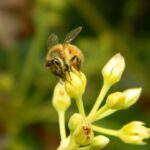Five public relations (PR) students of Curtin University, Sarawak Malaysia (Curtin Sarawak) had the honour of representing their university and Malaysia at the recent 14th Global Communications Project (GlobCom 2016) Symposium held at Zayed University in Abu Dhabi.
Dominic Liew Lik Ren, Sharthika Sydney Purushothaman Pillay, Shamilli Ravinchandran, Mavis Chong Yin Sian and Ifan Ramadhana, who are members of the Curtin Sarawak PR Student Chapter, joined students from universities in 15 other countries and across five continents to act as ‘global PR agencies’. Each group had to pitch a PR communication campaign for this year’s ‘client’, the Dugong and Seagrass Conservation Project, a global biodiversity initiative executed by the Mohamed bin Zayed Species Conservation Fund, which is supported by the United Nations Environment Programme (UNEP).
Dr Kamala Vainy Pillai, Lecturer in Public Relations and Advisor to the Curtin Sarawak Team, said, “GlobCom’s theme this year for biodiversity protection and conservation ties in with the United Nations’ Sustainable Development Goals (SDGs).” Dr Pillai added that Curtin Sarawak initiated the focus on biodiversity when it hosted the first GlobCom symposium in Malaysia in 2015 and introduced the ‘Heart of Borneo’ communication challenge to create greater awareness about biodiversity preservation and indigenous communities in Borneo.
Studies have found that an estimated global decline of 20 per cent in the world’s dugong population over the last century was largely due to human activities. The International Union for Conservation of Nature (IUCN) lists dugongs as vulnerable to extinction on its Red List of Threatened Species. The Convention on International Trade in Endangered Species (CITES) has also placed dugongs on its most endangered list, stating that all international trade in the species, with the exception of research, are completely prohibited. Seagrass, an important marine foundation species, is also declining worldwide, with almost 15 per cent of species considered threatened. The highly-productive seagrass plays an important role in influencing nutrient cycling and reconfiguring water flow, while also providing critical habitats for several in invertebrate species.
In the three months leading to the symposium, second and final year PR and communications undergraduates collaborated in virtual teams via the Internet to develop global strategies with three-level communication plans: to raise awareness at the global and local levels about the species and the project, encourage public participation and identify sponsorship opportunities, as well as enhance internal communications amongst the project partners in the eight countries.



